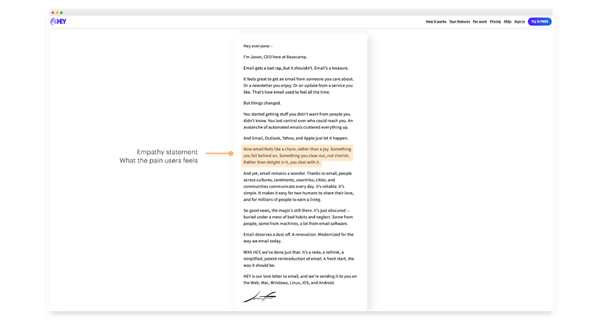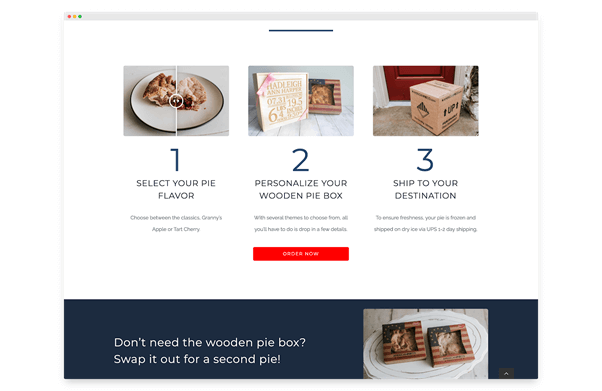When you’re planning a new ad campaign or building a new website where do you start? While you will need the help of a graphic designer, web developer, or SEO expert at some point, you shouldn’t start there.
If you want your marketing to get results, you need to start with your brand narrative; the story your brand is telling. When your brand narrative doesn’t resonate with your potential customers, a beautiful website or flashy ads won’t be enough to convert them.
With help from the StoryBrand framework, you can uncover a clear, captivating brand narrative that resonates with customers and helps your business grow.
As a bonus, you’ll also discover one essential paradigm shift that will change your business and marketing forever:
Your brand narrative is not about you or your business.
It’s about your customer.
If you:
- Feel frustrated by lagging sales
- Wish your website conversion rate was higher
- Want to stand out in a sea of competitors
- Your marketing is not generating the ROI you need
- Are you struggling to get new leads?
…it’s time to rewrite your brand narrative.
Below are five ways the StoryBrand framework can help you rethink your brand narrative, and write a clear, compelling story that connects with customers and.
1. You’re not the hero of the story. Your customer is.
All good stories have a hero.
In the story your customer is living, they want to be the hero, and they’re looking for someone who can help them become one.
If your website can immediately show potential customers how your company helps them become the hero of their story, they’ll be more likely to do business with you.
Let’s look at an example from Multimedia Makeup Academy, an organization that offers courses and training for aspiring makeup artists.

Instead of leading with how long they’ve been in business, or what kind of awards their classes have won, Multimedia Makeup Academy uses the header of their website to address the hopes and dreams of aspiring makeup artists.
Recommended Reading: How to Impress Your Customer Before Making a Deal
An aspiring makeup artist visiting this site doesn’t have to wonder whether or not training from Multimedia Makeup Academy can help them complete their mission of becoming a successful, sought after professional makeup artist.
With the story Multimedia Makeup Academy tells with their website, this fact is obvious.
If you want customers to engage with your brand, the story you tell with your website should always position the customer as the hero.
2. Address a specific problem or pain point your ideal customers feel
A story starts with the hero, but the plot develops with the introduction of the problem. The hero of a story always wants something. Unfortunately, something else is always standing in his way.
The problem you solve for your customer doesn’t have to be big or dramatic, but the problem does need to be a specific pain your ideal customers feel.
As the manufacturer of a unique coat hook system for schools, HangSafe Hooks knows the problem they solve for school administrators is bigger than just hanging backpacks.
HangSafe Hooks knows traditional classroom coat hooks can break, leading to potential injury and disorganized classrooms and hallways.
Drawing attention to this fact on their website shows potential customers that HangSafe Hooks recognizes and understands this obstacle to providing a safe, tidy learning environment.

If your brand narrative proves you understand the pain your customers are feeling, they’ll be more likely to stick around to learn about the solution you can offer them.
Here’s another example from Fast.co

Most people experience forgotten passwords and long annoying entry forms. Who wouldn’t want a secure, fast, and easy checkout process?
This type of copy is possible, when you spend the time to understand your customer pain points.
3. Be the guide and lead the way to the solution.
When your brand narrative addresses the problem your potential customers are facing, it sets your business up to step in as the guide who can lead potential customers to the solution.
This part of your brand narrative is where you can share about who you are and why you are uniquely positioned to help the hero find his way.
When crafting this portion of your brand narrative, it’s important to focus on expressing empathy and demonstrating authority.
Instead of talking about how many staff members you have, show empathy by sharing how everyone who works for you understands the frustration of the unique problem your potential customer is facing.

Hey.com email establishes empathy how managing our email feels like a chore, rather than a joy. Something you always feel behind in.
Every word in your marketing message, whether on a website or an ad matters. Instead of talking about how many years you’ve been in business, build authority by mentioning how you’ve spent years helping customers solve a specific problem.
This part of your brand narrative should show a potential customer that you understand where they are, but you also know how to help them get to where they want to be, similar to this example from Hey.com.
4. Give customers a clear path forward.
If your brand narrative positions your customers as the hero, addresses a specific problem they’re experiencing, and establishes your product or service as the solution they’ve been looking for, you’ll likely have your customers’ attention, and they’ll be interested to know more.
To ensure an interested customer actually makes a purchase, your brand narrative needs to include a plan.
Recommended Reading: 7 Types of Emails to Help Build Unbreakable Relationships with Customers
The plan is a simple, step-by-step guide that includes a call to action. This plan shows potential customers the clear path to doing business with you and solving their problem.
In this example from a Storybrand Guide (creativeo.co), the path to better marketing is mapped out from start to finish in just three steps, with schedule a call.

Here’s another great example from the American Pie Company (americanpieco.com).

5. Paint a clear picture of success…but don’t forget to mention the stakes
By now, your potential customers are close to doing business with you.
But there’s still something that’s making them hesitate.
As their mouse hovers over the “order now” button, they start to wonder:
- “Will this product really work for me?”
- “Can this service really make my life better?”
All your customers need to quell this fear is a clear picture of what their life can look like if they accept the call to action and move forward with doing business with you.
If you don’t show potential customers that they’re making the right decision, they’ll be left to draw their own conclusions.

Assure your customers are making the right decision by including a clear picture of the success they can experience.
In addition to success, don’t forget to increase the stakes by mentioning the negative outcomes your customer might experience if they choose not to buy.
This chart from interior design service decorist.com is a good example of how to contrast the success a customer can experience if they do business with you with the failure they might experience if they don’t.

A potential customer could choose to decorate their house themselves. But, will it be worth it at the end of the project when they’ve spent more than they planned, made too many mistakes, and had nowhere to turn for guidance and direction?
With all of that at stake, $299 is a small price to pay for guaranteed success.
If you feel like it’s time to reevaluate your brand story, but you’re not sure where to start, I suggest you pickup a copy of the StoryBrand book by Donald Miller and set some time with your team to go through crafting your StoryBrand Brandscript using Mystorybrand.com (a free tool from StoryBrand).

